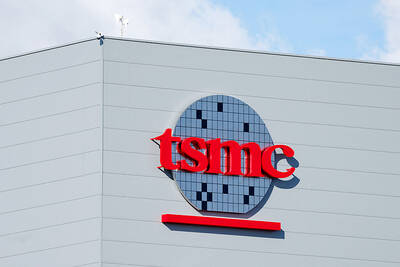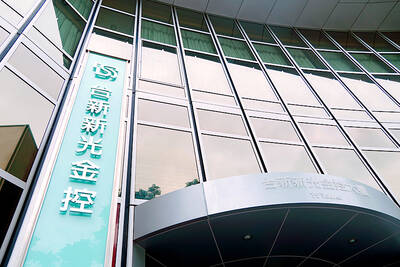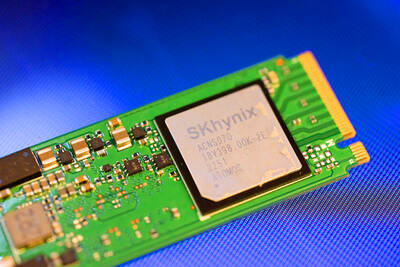Lotus Pharmaceuticals Co (美時化學製藥), one of the nation’s leading specialty generic drug developers, yesterday gave a positive outlook for this year, setting its sights on the US market for opioid use disorder (OUD) treatments.
The company, which is vying to launch a generic version of buprenorphine and naloxone, a leading agonist treatment for opioid dependence, said that toward the second half of this year, a US court is expected to give its ruling on patent lawsuits initiated by UK-based Indivior PLC, which is marketing the original drug as Suboxone.
The plaintiff’s patent claims are not solid and a favorable ruling is expected, Lotus Pharmaceuticals chairman Andrew Lin (林群) told an investors’ conference, adding that the company is prepared to initiate an “at-risk” launch for the generic treatment despite ongoing lawsuits.
In particular, the company is developing a film version of the OUD treatment that is placed under the tongue or inside the cheek, he said.
As the US Food and Drug Administration approved Sublocade, Indivior’s monthly subcutaneous injection OUD treatment, the British company slowed its litigation against companies making generic versions of Suboxone, Lin said.
The company is also expecting to launch a generic version of Budesonide ER, a corticosteroid indicated for patients with mild to moderate ulcerative colitis, in the final quarter of this year, after gaining a non-infringement ruling against Valeant Pharmaceuticals International Inc and Cosmo Pharmaceuticals NV, which are marketing the original drug as Uceris, he said.
The drug is expected to launch after Valeant’s 180-day exclusivity period ends, allowing the company to tap into a US$190 million market in the US, he said.
Meanwhile, the company has overhauled its goodwill and intangible assets portfolio as it continues to book impairment charges in an effort to reduce risks ahead, Lotus Pharmaceutical executive assistant Nadiya Chen (陳萩雅) said.
The amount of the impairment charges has been cut from NT$500 million (US$17.12 million) in 2016 to about NT$140 million last year, Chen said.
The company reaped gains from cross-region commercial synergies with affiliates of US-based Alvogen and its Asia-based affiliates, which helped lower its operating-to-expense ratio to a record 40 percent, it said.
Efforts to refinance debt have also cut annual interest expenses, Chen said.
As the global generic drug market has undergone significant changes since 2016, with many industry giants such as Teva Pharmaceuticals Industries Ltd and Perrigo Co experiencing precipitous declines, the company is to continue its strategy of specializing in the segment of complex, high-barrier and small-volume products that have high average selling prices, Chen said.

Taiwan Semiconductor Manufacturing Co (TSMC, 台積電) secured a record 70.2 percent share of the global foundry business in the second quarter, up from 67.6 percent the previous quarter, and continued widening its lead over second-placed Samsung Electronics Co, TrendForce Corp (集邦科技) said on Monday. TSMC posted US$30.24 billion in sales in the April-to-June period, up 18.5 percent from the previous quarter, driven by major smartphone customers entering their ramp-up cycle and robust demand for artificial intelligence chips, laptops and PCs, which boosted wafer shipments and average selling prices, TrendForce said in a report. Samsung’s sales also grew in the second quarter, up

On Tuesday, US President Donald Trump weighed in on a pressing national issue: The rebranding of a restaurant chain. Last week, Cracker Barrel, a Tennessee company whose nationwide locations lean heavily on a cozy, old-timey aesthetic — “rocking chairs on the porch, a warm fire in the hearth, peg games on the table” — announced it was updating its logo. Uncle Herschel, the man who once appeared next to the letters with a barrel, was gone. It sparked ire on the right, with Donald Trump Jr leading a charge against the rebranding: “WTF is wrong with Cracker Barrel?!” Later, Trump Sr weighed

HEADWINDS: Upfront investment is unavoidable in the merger, but cost savings would materialize over time, TS Financial Holding Co president Welch Lin said TS Financial Holding Co (台新新光金控) said it would take about two years before the benefits of its merger with Shin Kong Financial Holding Co (新光金控) become evident, as the group prioritizes the consolidation of its major subsidiaries. “The group’s priority is to complete the consolidation of different subsidiaries,” Welch Lin (林維俊), president of the nation’s fourth-largest financial conglomerate by assets, told reporters during its first earnings briefing since the merger took effect on July 24. The asset management units are scheduled to merge in November, followed by life insurance in January next year and securities operations in April, Lin said. Banking integration,

LOOPHOLES: The move is to end a break that was aiding foreign producers without any similar benefit for US manufacturers, the US Department of Commerce said US President Donald Trump’s administration would make it harder for Samsung Electronics Co and SK Hynix Inc to ship critical equipment to their chipmaking operations in China, dealing a potential blow to the companies’ production in the world’s largest semiconductor market. The US Department of Commerce in a notice published on Friday said that it was revoking waivers for Samsung and SK Hynix to use US technologies in their Chinese operations. The companies had been operating in China under regulations that allow them to import chipmaking equipment without applying for a new license each time. The move would revise what is known